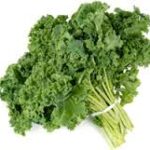Posts Tagged ‘magic of kale’
Kale: So Much More than Just a Trend
Love it or hate it, kale is huge. Though recent articles tote the end of the kale craze, the reality is that the beloved green remains extremely popular. From its Greek and Roman origins to its modern proliferation, kale is one of the most enduring, healthy, easy-to-grow, and delicious vegetables of all times. And, not…
Read More »
